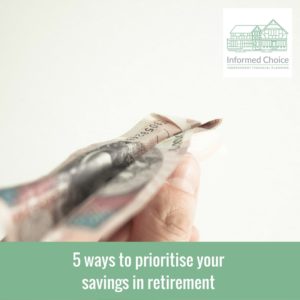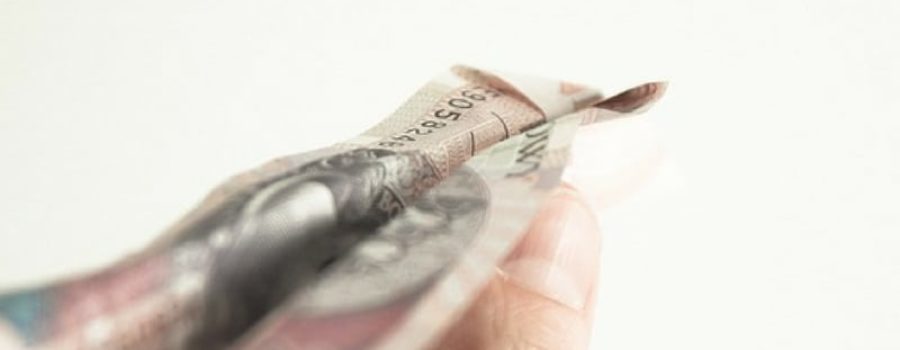 One of the pension announcements in the Autumn Statement last week was a reduction in the money purchase annual allowance.
One of the pension announcements in the Autumn Statement last week was a reduction in the money purchase annual allowance.
This annual allowance for people who access taxable income flexibly from their pension pots is being reduced from £10,000 to £4,000 next April.
As a result, people who flexibly access their pension pots from age 55 will need to be far more certain that they are ready for retirement.
From April, the act of accessing a pension pot will reduce the level at which you can continue to contribute from £40,000 to £4,000 a year.
According to Kate Smith, Head of Pensions at Aegon:
“The ‘money purchase annual allowance’ will be reduced from £10,000 to £4,000 a year next April. This means that once you start accessing money from a flexi-access pension, the maximum you will be able to continue paying into a pension and earning tax relief falls by £6,000.
“The money purchase allowance was introduced ahead of the pension freedoms to prevent people ‘recycling’ their pension saving which involves a process of taking money which has already received the benefit of government tax relief (20%, 40% or 45% depending on your tax band) and then adding it back to a pension and receiving the government top up again.
“If you are retiring in the traditional sense and giving up work completely to then live on your savings this change is unlikely to affect you.
“However, if you’re accessing your pension at an early age, from age 55 under the pensions freedoms, perhaps to pay off a debt, then the reduction could create a problem. Instead of being able to keep saving up to £40,000 a year into a pension tax free, the amount you can pay in will fall to just £4,000 and any contributions above this will be taxed at your marginal rate.
“As a result people need to be certain that they’re all set for retirement before accessing these savings or at least understand that it will affect their ability to keep saving into a pension.
“This rule highlights a general point about prioritising which savings you use up first in retirement as this can be almost as important as saving itself. Taking your savings in a particular order can make a big difference to how much tax you’ll pay and how much can be paid into your pension, making your savings last longer.
“It could also allow you to leave more money to your loved ones following your death.
“Typically you shouldn’t take money out of a tax advantaged savings plan until you actually need the income. If you are still in the workplace, you and your employer are likely to be paying into a pension, and if you’ve haven’t built up an adequate retirement income you may want to have the flexibility to increase your pension contributions.
“You should also avoid jumping up a tax band and paying more tax than you have to. Being savvy can save you money.”
Kate set out five ways to prioritise your savings in retirement, as a result in the reduction to the money purchase annual allowance from £10,000 to £4,000 next April.
1 – Bank account
Avoid paying income tax on any interest earned above your personal savings allowance, by not holding excess cash in your bank account.
2 – Use your ISA savings to initially provide a retirement income
You can cash in your ISA at any time and payments are tax-free, so they won’t affect the amount of tax you pay. Using your ISA savings can help you top up your income when moving from full-time work to reduced hours to full retirement. ISAs form part of your estate potentially attracting inheritance tax, although there are special tax rules between spouses and civil partners who inherit their partners ISA allowance.
3 – Cash in your pension tax-free cash sum
Up to 25% of your pension fund. You can do this from age 55, and as the amount is tax-free it won’t affect the amount of tax you pay. Nor will taking a 25% cash trigger the ‘money purchase allowance’ limit
4 – Take small pension pots worth less than £10,000
With the exception of the 25% tax free cash withdrawal from your pension, any further income will be taxed under the income tax rules. Cashing in up to three small pension pots however doesn’t trigger the ‘money purchase allowance’ limit and means you can keep saving within the annual allowance of £40,000
5 – Start taking your pension income
You should generally access your pension last after accessing your ISA, and pension tax-free cash, as any pension income will be taxed under the income tax rules. This will also help your retirement income to last longer. If you are still working you may want to have the option of keeping on making pension savings.
Be aware that once you take retirement income from income drawdown or a flexible annuity pension savings will be limited to £4,000 a year, down from £10,000 from April 2017, which could affect your future plans.
You need to be careful how much you take out in any tax year to avoid crossing a tax band and paying more tax then you need to. It may be worth taking some pension income alongside income from other savings if you’d still be below the income tax threshold.
Special rules apply to pensions in the event of your death, and they do not normally form part of your estate. If you die before age 75, your unused pension funds can be paid tax-free to your loved ones either as a lump sum or income. This also applies to annuities if you had bought a dependent’s annuity.
If you die on or after age 75, any pension funds can be paid to beneficiaries and will be taxed at their marginal rate of income tax, as a lump sum, annuity or as a drawdown pension.
The fund could also be paid to a trust as a lump sum less a 45% tax charge.
If you are considering a withdrawal from your pension pot, do speak to us for help in planning your retirement income strategy and choosing the most advantageous order in which to access your savings.

